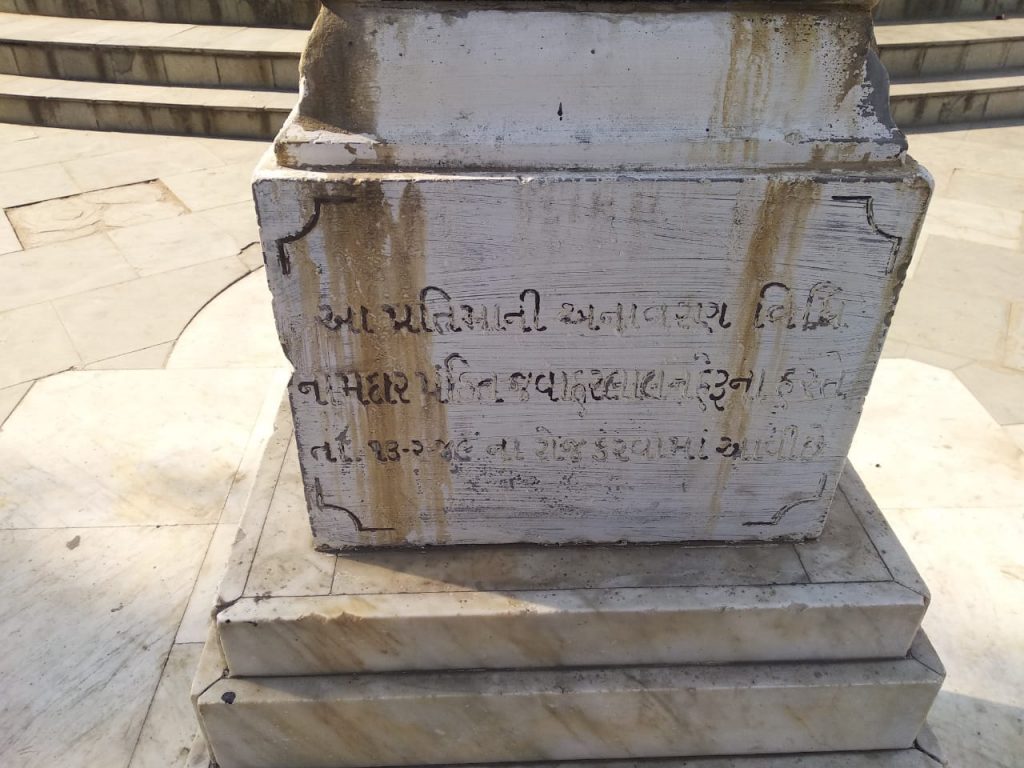Jawaharlal Nehru and Sardar Patel shared mutual respect as comrades in the Independence movement and disciples of Mahatma Gandhi.
Imagine former Prime Minister Jawaharlal Nehru unveiling a bust of Sardar Vallabhbhai Patel and laying the foundation stone of a university town named after him. That too when Sardar Patel was alive and an active colleague of Nehru with whom he had mutual differences.
But such events do not fit the current poisonous propaganda on social media about Nehru versus Patel. So, these are unlikely to be recalled or highlighted.
Yes, Patel and Nehru differed. They had different and, at times, opposite opinions on key issues. They even thought of separating more than once. This has been milked by the BJP-RSS groups beyond limit. But this wasn’t the whole story. They also shared mutual respect as comrades in the Independence movement and as disciples of Mahatma Gandhi.
It might surprise WhatsApp consumers in India that Nehru unveiled a bronze bust of Sardar Patel in the town square of Godhra. He offered a glowing tribute to Sardar in his speech and said, “Sardar Patel is a valiant fighter in the cause of freedom… Having won freedom, he is now engaged in retaining it. He has changed the map of India”. (‘Maintain Secular Nature of State’, The Times of India, 14 February 1949, P1) He also “deprecated the suggestions in some quarters that there was lack of understanding” between them. He said “there was hardly a day or night when he (Nehru) did not take counsel from the Sardar”.
Addressing the people gathered at the venue, Nehru said it was “rather embarrassing” for him to make a speech on the occasion as “his association with Sardar Patel for the last 30 years had been close and intimate… Both of them, jointly, had taken great decisions in regard to Partition and other major questions”. (TOI report, 14 February 1949).

(Naamdaar was used as honorific for high officials) | Khandubhai Parmar
Godhra was the place where Sardar Vallabhbhai Patel started his legal practice. After unveiling the statue, Nehru also laid the foundation stone of a town hall. Eventually, it was constructed at a cost of “Rs two lakh collected from among the people” and was opened by then-railway minister Lal Bahadur Shastri on Sardar Patel’s birthday, 31 October 1954. (‘New Town Hall Opened’, TOI, 1 November 1954, P9)
Before going to Godhra by a special train from Anand, Prime Minister Nehru laid foundation stone of the Vallabh Vidyanagar, a university town named after Sardar on the same day. “The site of the new township almost borders on the nearby village of Karamsad.” (‘Foundation of University Town Laid near Anand’, TOI, 14 February 1949, P1) Detailed report of Pandit Nehru’s speech at this event, which appeared a day later, said, “The Prime Minister was really happy to observe the good work done at Vallabh Vidyanagar… He was happy that Vallabh Vidyanagar would provide… opportunity to Indian youths so that not only could they earn their livelihood while being educated but could also attain practical efficiency through work.” (‘Important Role of Rural Universities in India’, TOI, 15 February 1949, P9)
Nehru unveiled one more statue of Sardar Patel after the latter’s death. During his visit to Baroda on 7 December 1952, he “unveiled a bronze bust of Sardar Vallabhbhai Patel by pressing an electric button. The bust was installed at Sardar Bhavan, local Congress Party office”. (‘Sardar’s Bust Unveiled’, TOI, 8 December 1952, P9)
And, Sardar Patel was equally if not more generous in paying tribute to Nehru. On the occasion of Nehru’s 59th birthday, Patel said in the Constituent Assembly, “Mahatma Gandhi chose Pandit Nehru as his political heir and it was very gratifying to see that the choice fell on the right person”. Patel added, “Nehru was truly following the ideals set by Gandhiji and had raised the status of India in the counsels of nations in the world.” He also noted they “moved like brothers and were associates for over 30 years”. Nehru reciprocated by saying “but for Sardar Patel’s affection and advice, he would not have been able to run the state”. (‘True Disciple of Mahatma’, TOI, 15 November 1948, P9)
Then a “touching scene” followed. Two leaders “rose to garland Pandit Nehru. Sardar Patel took the garland from his (sic) hand and himself garlanded Pandit Nehru and embraced him”. (TOI report, 15 November 1948)
Sardar Patel’s daughter Maniben Patel who also worked as his secretary remembered the relationship between the two when both were living on York Road, Delhi. “In the days when they were living opposite to each other, seldom a day passed when they didn’t meet. At 1 pm, while coming home for lunch or while going back to office or at night, Jawaharlalji would drop in. Both of them would chat, then Sardar would accompany him till gate while chatting still continued, and sometimes he would accompany him till (Pandit Nehru’s) residence.” (From Maniben’s article ‘Sardar’ in Centenary Memorial Volume. Ed: Jaswant Shekhadiwala, Sardar Patel University, P94)
Maniben Patel also observed that “some hurdle-happy sycophants tried to create misunderstandings between them when Jawaharlalji shifted from York Road residence to Teen Murti.”
But the projection of Patel-Nehru differences has served political ends well for the BJP and the RSS. The Congress also contributed to the stories of divide by distancing itself from Sardar for long.
Amid all the excitement over the new Statue of Unity that Prime Minister Narendra Modi inaugurated, it is historically important to remember the other Sardar statues that Nehru unveiled – in Godhra and Baroda.
Urvish Kothari is a senior columnist and writer in Ahmedabad.
ThePrint’s YouTube channel is now active and buzzing. Please subscribe here.